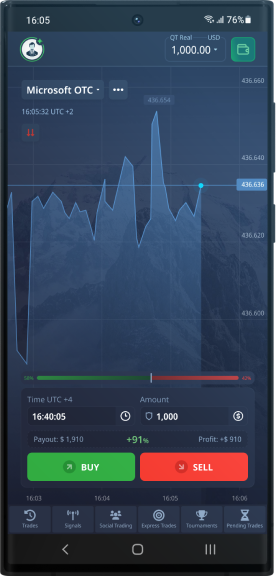
The Best Indicators for Pocket Option: Maximize Your Trading Success
In the world of online trading, the right tools can make all the difference. Among these tools, indicators play a crucial role. If you’re looking to enhance your trading experience with Pocket Option, understanding and utilizing the best indicators is essential. For personalized support, feel free to best indicators for pocket option https://pocket-option3.com/contact/. In this article, we’ll dive into some of the best indicators you can use to improve your trading strategies, increase accuracy, and ultimately achieve better results.
Understanding Trading Indicators
Trading indicators are statistical calculations based on historical price, volume, and open interest information. They help traders make sense of market trends and can signal when to enter or exit trades. When used effectively, these indicators can reduce risk and increase the probability of successful trades.
Types of Indicators
There are several types of indicators, but they generally fall into three broad categories:
- Trend Indicators: These include moving averages, Bollinger Bands, and trend lines that help identify the direction of the market.
- Momentum Indicators: Examples include the Relative Strength Index (RSI) and the MACD (Moving Average Convergence Divergence), which help gauge the strength of a price movement.
- Volume Indicators: These include indicators that analyze the trading volume, shedding light on the strength behind price movements, such as On-Balance Volume (OBV).
Top Indicators for Pocket Option
1. Moving Averages
Moving averages are among the most widely used indicators. They smooth out price data to help traders identify the direction of the trend over a specific period. The two most common types are the Simple Moving Average (SMA) and the Exponential Moving Average (EMA). The EMA gives more weight to the most recent prices, making it more responsive to new information.
2. Relative Strength Index (RSI)
The RSI is a momentum oscillator that measures the speed and change of price movements. It ranges from 0 to 100 and is typically used to identify overbought or oversold conditions in the market. An RSI above 70 indicates that an asset may be overbought, while an RSI below 30 suggests it may be oversold, presenting potential trading opportunities.

3. MACD (Moving Average Convergence Divergence)
The MACD is a trend-following momentum indicator that shows the relationship between two moving averages of an asset’s price. Traders use the MACD for generating buy/sell signals and identifying potential reversals in trend. The crossovers of the MACD line and the signal line are particularly significant.
4. Bollinger Bands
Bollinger Bands consist of a middle band (SMA) and two outer bands that are standard deviations away from the middle band. They help traders measure market volatility and identify overbought or oversold conditions. When the price touches the upper band, it may signal a possible sell opportunity, whereas touching the lower band may indicate a potential buy opportunity.
5. Stochastic Oscillator
The Stochastic Oscillator is a momentum indicator comparing a particular closing price of an asset to a range of its prices over a specific period. It generates values between 0 and 100 and is primarily used to identify overbought or oversold conditions in the market. Values over 80 indicate overbought conditions, while values below 20 signal oversold conditions.
Combining Indicators for Better Results
While each indicator can be useful on its own, combining several indicators can provide a more comprehensive view of market conditions. Traders often use a mix of trend, momentum, and volume indicators to confirm signals and validate trading decisions. For instance, you might use moving averages to determine the trend direction while employing the RSI to gauge momentum and identify potential entry/exit points.
Tips for Using Indicators Effectively
Here are some practical tips for maximizing the effectiveness of trading indicators:
- Backtest Your Strategy: Always test your indicator setups in a demo account to understand how they perform under various market conditions.
- Use Multiple Time Frames: Analyze different time frames to get a better understanding of market trends and avoid false signals.
- Set Clear Rules: Establish specific rules for entering and exiting trades based on indicator signals to minimize emotional decision-making.
- Stay Informed: Keep up with market news and global events since they can impact trading signals and market behavior.
Conclusion
Choosing the best indicators for Pocket Option can significantly impact your trading success. By understanding how these tools work and how to combine them effectively, you can improve your market predictions and make more informed trading decisions. Remember, while indicators can support your strategies, no tool guarantees success. Always practice proper risk management and stay vigilant in your trading endeavors.
